-
“Standing Female Nude” Introduction
-
"Standing Female Nude" is the title poem of Carol Ann Duffy's first collection, published in 1985. A monologue told from the perspective of a sex worker modeling for a celebrated male painter, the poem explores women's objectification, gendered double standards, class, and art. The speaker, who earns very little for her time, snarkily imagines the painting being ogled by "the bourgeoisie" in museums as evidence of the artist's so-called genius. In this way, the poem illustrates how men's and women's work is often unequally valued and received, and how the male gaze can obscure women's humanity. "Standing Female Nude" was inspired by a real painting: "Le Grand Nu," or "Large Nude," by French Cubist artist Georges Braque.
-
-
“Standing Female Nude” Summary
-
The speaker, the nude model of the title, poses for six hours just to earn a little cash. As she positions her body so that her breasts, stomach, and butt catch the light coming through the window, a man paints a dull image of her. He tells her to twist more to the right and not to squirm. She knows she'll be depicted in a cold, precise manner and put on display in some prestigious gallery. The middle class will murmur admiringly at this picture of an impoverished sex worker who works by the river, deeming it capital-A Art.
Well, that might happen. The painter fusses over the structure of the piece while she wonders when she'll be able to eat again. He tells her she's getting too skinny, which is a bad thing. Her breasts have started to sag and it's chilly in the painter's studio. She foresees the Queen of England staring at her body, muttering her approval and then carrying on as usual. The thought of the Queen looking at the painting makes the speaker laugh.
The painter is named Georges and he claims to be a genius. Yet he doesn't always pay close attention to what he's doing, and sometimes he gets an erection while staring at the speaker's body. Men think about their mothers in order to stop such things. The painter controls the speaker's body on the canvas, suggestively dabbing his paintbrush into the paint again and again. The speaker pities small men like him, who have no money for her services. He's as poor as she is; they are both just trying to get by.
She asks him why he paints her, and he replies that there are no other options. He tells her not to speak. Her happiness is strange to him; artists like him are much too serious. In the evenings, the speaker goes to the bars to drink wine and dance. He finishes the painting and, quite satisfied with it, shows it to her before lighting a cigarette. She simply asks for her payment and gathers up her clothes. She doesn't see herself in the painting at all.
-
-
“Standing Female Nude” Themes
-
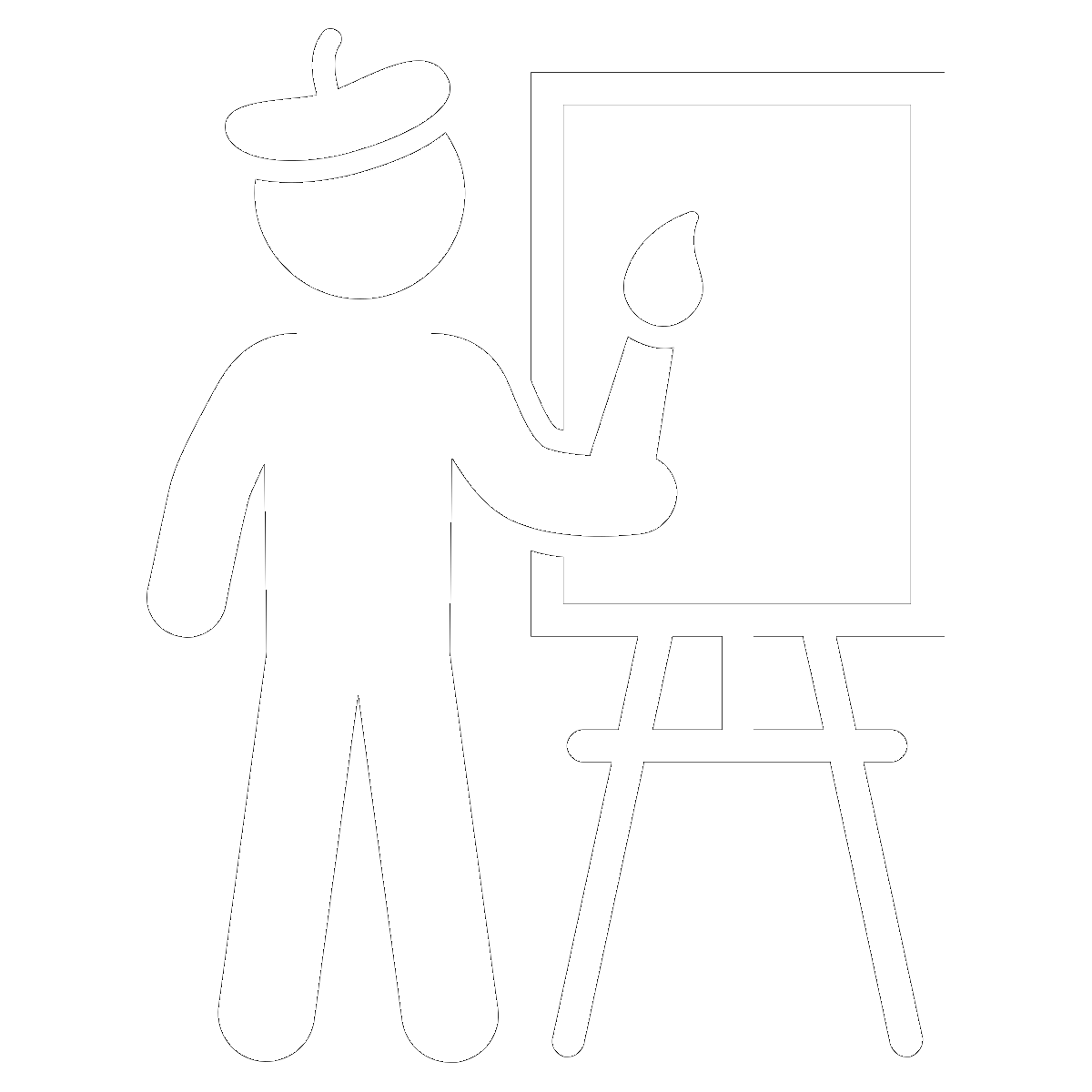
Gender, Work, and Double Standards
"Standing Female Nude" depicts the double standards in the way society values men's and women's work. The poem's speaker is a poor sex worker posing nude for a respected male artist (loosely based on the French Cubist painter Georges Braque), who is implied to be just as poor as his model. Both are, in essence, profiting off a naked female form, but the male artist is deemed a "genius" while the model is written off as nothing but a "river-whore."
When the speaker asks the artist why he does "this," he responds "Because / I have to." It's not clear if this need stems from a desire to prove himself, to make a living, or, likely, both. What is clear is that he takes himself and his work extremely "seriously." He snaps orders at the speaker, tells her "he's a genius," and proudly displays his painting as though she should be honored and awed. He also gets an erection while painting, emphasizing that his work is no less erotic than the speaker's own. And yet, the rest of society seems to support his ego: his art will be "hung / in great museums" and praised by the "bourgeoisie." The speaker even imagines the "Queen of England" approvingly "gazing on [her] shape"—not appreciating the female model herself but rather the skill of the male artist who "possess[ed]" her "on canvas." He may not have enough money to pay outright for this woman's sexual "arts," then, but he can certainly profit off them reputationally in a way that she cannot.
Indeed, the speaker earns pittance for her time and can barely afford to eat. That "Because / I have to" applies to the speaker's work as much as it does the artist's; she's "getting thin," aging, and unsure when her next meal is coming. The male artist's brushstrokes will make her naked body acceptable to society's upper crust, while that body itself must slink off into the darkness and "dance around bars" to earn a living. Artists like him may "take themselves too seriously," but it seems that no one takes the female speaker seriously at all.
This hypocrisy is perhaps meant to evoke life as a female writer in a male-dominated literary scene. That is, the model might symbolize the poet herself: a woman who bares her soul in her writing, yet whose work and experiences may be commandeered or dismissed by self-serious male writers and critics.
Where this theme appears in the poem:- Lines 1-28
-
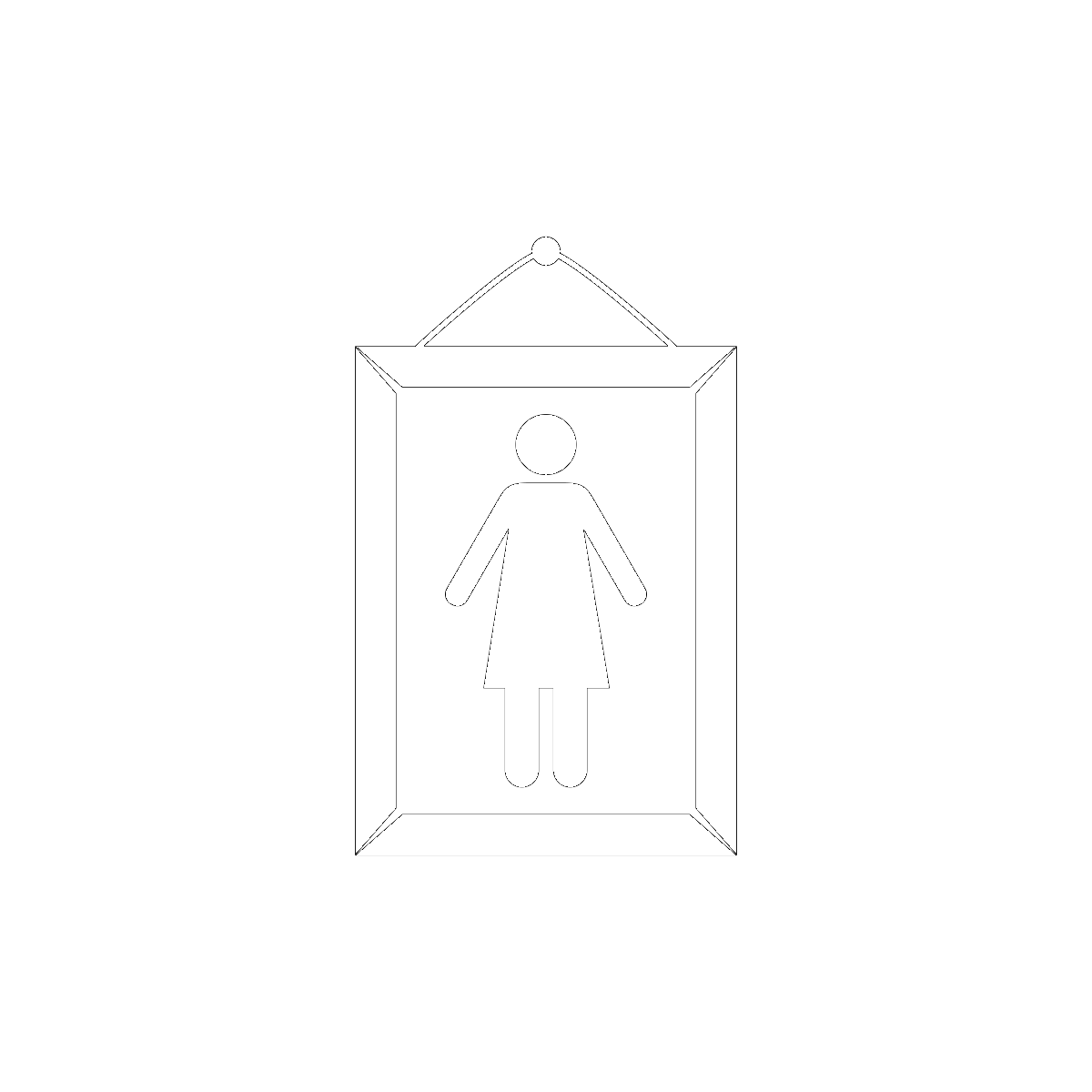
Objectification and the Male Gaze
The story presented in "Standing Female Nude" illustrates the way that women have been historically objectified, misrepresented, and erased by the male gaze. Even as the male artist here aims to "possess[]" his female model "on canvas," he doesn't "capture" her likeness so much as create an image of a person who doesn't exist. The woman herself is rendered invisible by this portrait, which obscures her reality and even her humanity itself.
The speaker makes it clear that the man painting her, despite being a so-called "genius," sees her as an object rather than an actual person standing in front of him. He "drains the colour" from her, trying to "analytically" capture her physical "shape" rather than showcase her spirit, personality, and the very real life she lives.
That he "stiffens for [her] warmth" suggests that he’s turned on as he paints her, implying that he more specifically views her as, and is shaping her into, a sexual object. Indeed, he wants her to stand "still" with "Belly nipple arse in the window light." He isn't thinking about her comfort or dignity, only what looks best to him—and, perhaps, what will attract viewers. As such, he's disappointed that she's thin and that her breasts are sagging not because she's starving, but because it doesn’t look good in the painting. To him, she's a mere surface, something beautiful to be rendered on canvas for others to consume. When she tries to engage with him, he tells her not to talk. "He is concerned with volume, space"; her hunger, suffering, and voice don't matter.
The model is the speaker in the poem, of course, which grants her the voice that the male artist would silence. She looks down on the painter as a "[l]ittle man," "confuses" him with her "smile," and dismisses his portrait of her. "It does not look like me," she says, suggesting that doesn't accept the fantasy of her that he's so "proud" of. She knows who she is, even if he doesn't. The speaker also laughs at the idea of aristocrats "coo[ing] / at such an image of a river-whore," as their "murmurs" belie their lack of understanding of the reality of her life. Still, people in "museums" will ultimately appreciate and remember the man's painting, not the woman behind it. The male gaze ignores the reality of women's lives, flattening them into mere "shape[s]" to be stared at.
Where this theme appears in the poem:- Lines 2-14
- Lines 16-19
- Lines 24-28
-

Class, Hypocrisy, and Artistic Snobbery
The speaker of "Standing Female Nude" envisions the painting of her naked body being "hung / in great museums," where the "bourgeoisie"—and perhaps even the Queen of England herself!—will softly, seriously murmur their approval. This ironic image of the wealthy quietly ogling a painting "of a river-whore" with whom they'd never interact in real life makes the speaker laugh. The poem implies that the upper classes like to think of themselves as highbrow tastemakers when, in reality, their appreciation of art is shallow and conformist. Members of the bourgeoisie praise the speaker's portrait because they think they're supposed to, not because they have any sort of real emotional connection with the work. "They call it Art," the speaker says, that capital A conveying the speaker's mocking disdain and hinting that in her mind, such "Art" is superficial and inauthentic.
Indeed, the speaker knows that were she actually to meet any of these people by the riverbanks where she sells sex, they'd turn up their noses and hurry on past. Her hunger and desperation wouldn't matter to them, and they only approve of her now that her body has been sapped of its vitality ("drain[ed]" of "colour") and "hung / in great museums." They're classist hypocrites who prioritize a painting over a person—and who think this makes them smart and cultured.
In reality, their approval is meaningless to the speaker. To someone worried about "the next meal," overly serious conversations about "volume" and "space" seem not simply out of touch but downright ridiculous. In undermining the authority of these artistic judges, the poem undermines the concept of capital-A "Art" in general. Why should these people, the poem implicitly asks, get to decide what counts as art in the first place—and why should art matter more than the human stories behind it?
Where this theme appears in the poem:- Lines 5-9
- Lines 11-15
- Lines 24-25
-
-
Line-by-Line Explanation & Analysis of “Standing Female Nude”
-
Lines 1-4
Six hours like ...
... to be still."Standing Female Nude" is a dramatic monologue told from the point of view of a female sex worker who's modeling for a male artist. Its 28 lines of free verse are broken into four septets (seven-line stanzas), and the overall appearance of the poem is straightforward, much like its down-to-earth, working-class speaker.
The poem begins with the speaker describing her pose: she stands for "Six hours like this," her "Belly nipple arse in the window light." Right away, the poem emphasizes the speaker's naked body; she's exposing herself, making herself vulnerable, for a "few francs." The alliteration here ("for a few francs") calls readers' attention to how little she'll earn for "six hours" of work. This, in turn, suggests that this woman is poor and doesn't have a lot of choices. This phrase also implies that the poem takes place in France (a franc is a French unit of currency prior to the introduction of the Euro).
Though her body is bathed in light from the window, the speaker says that the artist she's posing for (introduced as an anonymous "he" in these lines) "drains the colour" from her.
- This alludes to the fact that early Cubist works were typically painted in very muted colors. Though readers don't know it yet, the painter here is the famous French Cubist artist Georges Braque; the painting that inspired this poem features a mixture of dull gray, brownish red, and yellow tones.
- Metaphorically, however, this line about draining color suggests that the painter is not really seeing the speaker for who she is. His rendering of her body is cold and lifeless, and it fails to capture her vitality.
This artist tells the speaker to move "Further to the right" and then instructs her "to be still." He's fully absorbed in his painting and needs her to look a certain way regardless of whether it's comfortable for her. In short: he's much more interested in his painting than the woman behind it.
-
Lines 5-7
I shall be ...
... call it Art.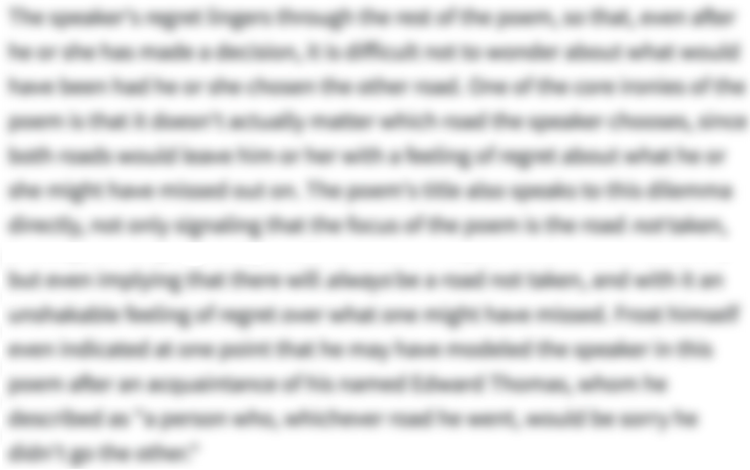
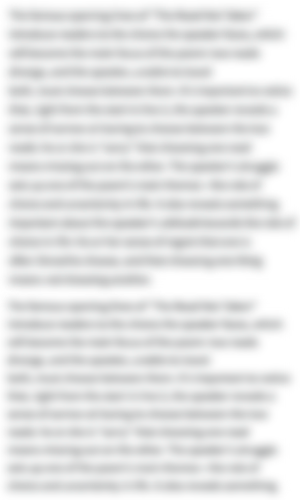
Unlock all 286 words of this analysis of Lines 5-7 of “Standing Female Nude,” and get the Line-by-Line Analysis for every poem we cover.
Plus so much more...
Get LitCharts A+ -
Lines 8-11
Maybe. He is ...
... the studio is cold. -
Lines 11-15
In the tealeaves ...
... he's a genius. -
Lines 16-21
There are times ...
... how we can. -
Lines 22-26
I ask him ...
... around the bars. -
Lines 26-28
When it's finished ...
... look like me.
-
-
“Standing Female Nude” Symbols
-
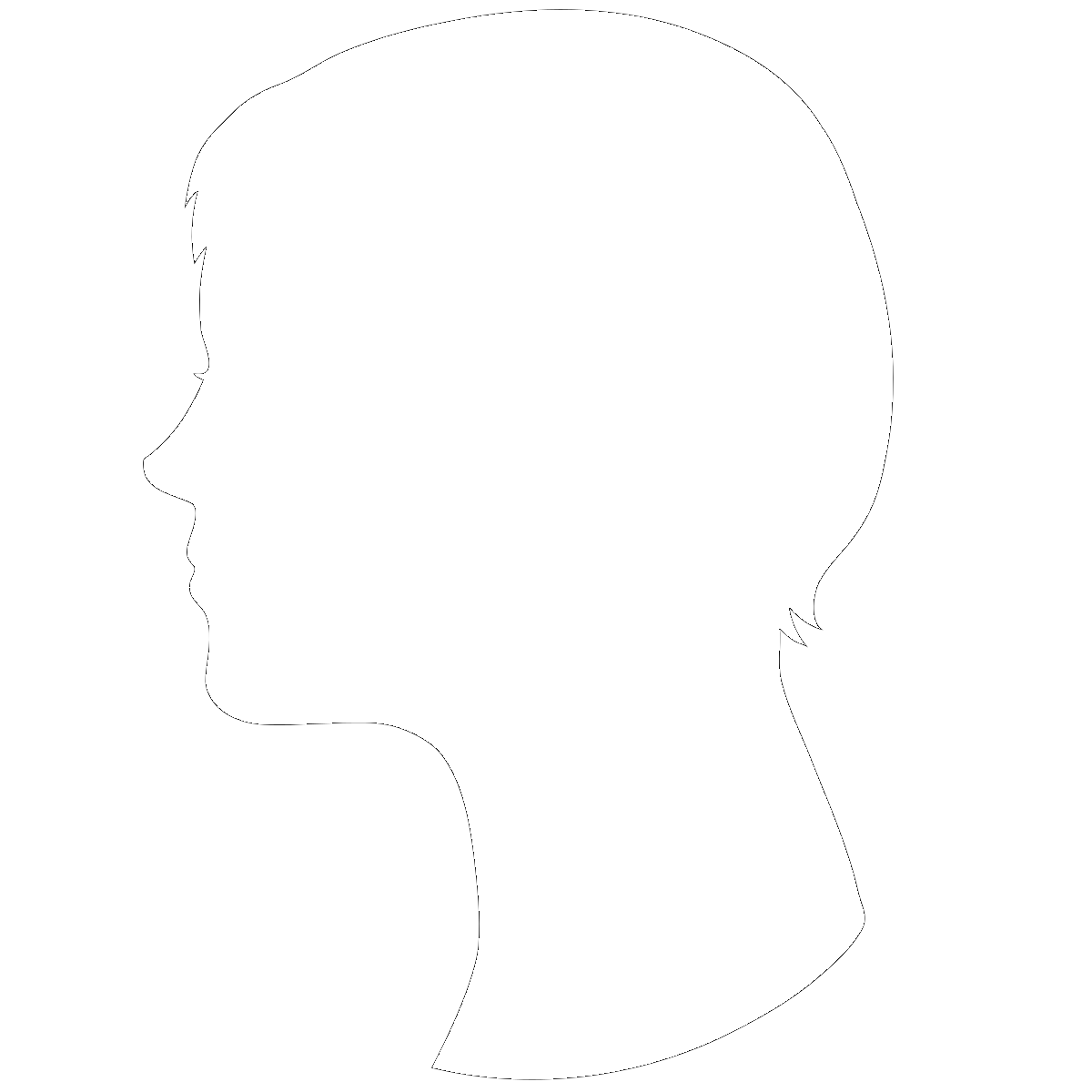
The Nude Model
The nude model in the poem might symbolize the poet herself or any female author/artist creating in a patriarchal society. Carol Ann Duffy began writing at a time when the literary world was dominated by male voices. (Indeed, in the 300+ year history of the United Kingdom's poet laureateship, Duffy was the first woman to be awarded the title in 2009!) The model's nakedness suggests the ways in which the poet makes herself vulnerable in her work, exposing her mind and soul to an audience that often reduces her to gender and/or fails to grant her work the respect it deserves. The model's pointed remark that "These artists / take themselves too seriously" likely applies to Duffy's male contemporaries (and the long line of male predecessors) who believed poetry was men's province, while women were only fit to play the part of the muse.
Where this symbol appears in the poem:- Lines 1-3: “Six hours like this for a few francs. / Belly nipple arse in the window light, / he drains the colour from me.”
- Lines 5-6: “I shall be represented analytically and hung / in great museums.”
- Lines 10-13: “My breasts hang / slightly low, the studio is cold. In the tealeaves / I can see the Queen of England gazing / on my shape.”
- Lines 18-21: “He possesses me on canvas as he dips the brush / repeatedly into the paint. Little man, / you've not the money for the arts I sell. / Both poor, we make our living how we can.”
- Lines 25-26: “At night I fill myself / with wine and dance around the bars.”
- Lines 27-28: “I say / Twelve francs and get my shawl. It does not look like me.”
-

The Paintbrush
In the third stanza, the speaker describes the "genius" painter getting aroused while looking at her naked body and then dipping his "brush / repeatedly into the paint." This image is deliberately sexual: the paintbrush is a phallic symbol. This action of repeatedly shoving it into the paint reflects the painter's desire to "possess[]" the speaker—despite not having "the money for the arts" she sells. He can't afford to pay her for sex, so he "has" her in the only way he can—by painting her. He isn't thinking of her as a person who is only here because she needs money to eat; he's thinking of her as an object, something that exists merely to titillate the senses.
Where this symbol appears in the poem:- Lines 18-19: “He possesses me on canvas as he dips the brush / repeatedly into the paint.”
-
-
“Standing Female Nude” Poetic Devices & Figurative Language
-
Juxtaposition
"Standing Female Nude" features stark juxtapositions throughout that undermine the "genius" of the male artist and highlight the callousness and hypocrisy of the "bourgeoisie."
For example, the speaker says in the second stanza that the artist "is concerned with volume, space. / I with the next meal." These drastically different priorities highlight how different the lives of these two people are. Despite the fact that they are "Both poor," only one of them is worried about getting enough to eat. The painter's artistic concerns seem frivolous and trivial alongside the speaker's hunger, and readers can understand why the speaker ultimately declares that "These artists / take themselves too seriously."
Later, the speaker follows up the artist's declaration that "he's a genius" with the reality that "There are times he does not concentrate / and stiffens for my warmth." She's skewering his inflated sense of self-importance, contrasting the idea of his artistic genius with his basic, human lust. He thinks he's above the reality of being a fallible human being, the poem implies, but he's not.
The poem also juxtaposes his seriousness against the speaker's relaxed demeanor. The painter demands that she be "still" and stop trying to talk to him. She smiles, which "confuses him," and laughs at the thought of the "Queen of England" looking at her portrait. Through juxtaposition, the speaker comes across as much more self-aware and honest than both the painter and the class of people celebrating his work. She knows that society doesn't respect her "arts," and she has no chance of being deemed a "genius" by the elite. The speaker definitely doesn't take herself too seriously, nor does she think that all this capital-A "Art" business really matters as much as people like to think it does.
Where juxtaposition appears in the poem:- Lines 6-7: “The bourgeoisie will coo / at such an image of a river-whore. They call it Art.”
- Lines 8-9: “He is concerned with volume, space. / I with the next meal.”
- Lines 12-14: “I can see the Queen of England gazing / on my shape. Magnificent, she murmurs, / moving on. It makes me laugh.”
- Lines 15-17: “He tells me he's a genius. / There are times he does not concentrate / and stiffens for my warmth.”
- Lines 24-28: “My smile confuses him. These artists / take themselves too seriously. At night I fill myself / with wine and dance around the bars. When it's finished / he shows me proudly, lights a cigarette. I say / Twelve francs and get my shawl. It does not look like me.”
-
Enjambment


Unlock all 211 words of this analysis of Enjambment in “Standing Female Nude,” and get the poetic device analyses for every poem we cover.
Plus so much more...
Get LitCharts A+ -
Parataxis
-
Asyndeton
-
Irony
-
-
“Standing Female Nude” Vocabulary
Select any word below to get its definition in the context of the poem. The words are listed in the order in which they appear in the poem.
- Francs
- Arse
- Madam
- Analytically
- Bourgeoisie
- Coo
- Tealeaves
- Georges
- Stiffens
- Possesses
- Shawl
Francs-
(Location in poem: Line 1: “Six hours like this for a few francs”)
A unit of French currency. The implication is that the speaker isn't get paid much for her work.
-
Form, Meter, & Rhyme Scheme of “Standing Female Nude”
-
Form
"Standing Female Nude" is a 28-line free verse poem split into four septets (seven-line stanzas). Though the poem has no regular meter or rhyme, its arrangement into four even blocks of text might suggest the way the painter coldly divides the woman's body into parts ("Belly nipples arse") to be rendered "analytically." The poem's short sentences and frequent caesura create a choppy rhythm that keeps the poem feeling very clipped and matter-of-fact. This emphasizes the speaker's working-class sensibilities; she's more concerned with her "next meal" than making the poem adhere to a specific format.
-
Meter
"Standing Female Nude" is written in free verse, so it doesn't follow a set meter. The lack of meter results in a more natural, conversational poem; the speaker sounds as if she's casually telling someone else about her experience modeling for this painter. The more down-to-earth, organic rhythms created by free verse also more accurately reflect the speech of a working-class character: she doesn't consider herself one of "These artists [who] / take themselves too seriously."
-
Rhyme Scheme
As a free verse poem, "Standing Female Nude" doesn't follow a rhyme scheme. As with the lack of meter, the absence of a rhyme scheme makes the poem sound more down-to-earth and conversational. This is a woman who spends most of her time working, trying to scrape together a living; a steady rhyme scheme would make the poem sound more artfully constructed and false—like it takes itself "too seriously."
-
-
“Standing Female Nude” Speaker
-
The speaker of the poem is a female sex worker doing some nude modeling "for a few francs." Her body is growing "thin" from hunger, and she worries about how she'll be able to afford her next meal. She refers to herself as a "river-whore," suggesting that she mainly sells sex to sailors and fishermen—other working-class people like herself.
As she stands naked in front of a supposedly "genius" male artist (implied to be French Cubist artist Georges Braque), she imagines the crowds of affluent people who will praise the painter's image of her—even though those same people presumably couldn't be bothered with the real woman whose "arts" they would no doubt find repulsive. The speaker comes across as sharp and observant, able to see through "bourgeoisie" hypocrisy and undermining the authority of those who decide what gets to be called "Art."
She also sees through the inflated sense of self-importance displayed by this artist and others like him, who "take themselves too seriously." There are more important things to her than "volume, space"—like finding "the next meal." Her "smile confuses" the painter, who likely expects a poor sex worker to be diffident before a male "genius." Instead, she's aware that both she and the painter simply "make our living how we can" and isn't cowed by his supposed greatness.
She also thinks he's failed to capture her likeness in his painting, which has "drain[ed]" her of color. But she doesn't seem to let the painter's misunderstanding of her define her; the painting may look nothing like her, but she's more concerned with taking her payment and getting out of there. Unlike the artist, she has no illusions of moving up in the world. She's just trying to make it from one day to the next.
-
-
“Standing Female Nude” Setting
-
The poem is set inside a male artist's "studio." It's fair to assume that this studio is in France sometime in the early 1900s, given that the artist is based on the French cubist painter Georges Braque. The speaker, a sex worker, is posing nude near a window. She notes that the studio is "cold" and she seems physically uncomfortable as the artist tells her to twist her body in certain ways and then hold still so that he can paint her. This stiff, joyless environment reflects the fact that the male artist takes himself "too seriously," at least in the speaker's mind. She's eager to get out of there once the work is done.
-
-
Literary and Historical Context of “Standing Female Nude”
Literary Context
Carol Ann Duffy is among the most acclaimed and high-profile poets in the contemporary UK. Born in Scotland in 1955, she became the UK's first female poet laureate in 2009 and served in the position for the next 10 years.
Duffy's first poetry collection, Standing Female Nude, was published in 1985. In addition to this poem, it featured many of the poems that would launch Duffy into the public eye: "Head of English," "Education for Leisure," "War Photographer," and "The Dolphins," among others. Like many of her poems, "Standing Female Nude" is written as a dramatic monologue: a poem told from the perspective of someone who is clearly not the poet. Duffy has often used this form to elevate the voices of people pushed to the margins of society. In "Standing Female Nude," she focuses on the experience of a female sex worker whose "arts" are devalued in comparison to the "serious[]" efforts of the male artist painting her.
Duffy was also deeply influenced by Sylvia Plath, whose Collected Works she received for her 25th birthday. She would go on to edit an edition of Plath’s poems and to write a piece for The Guardian about how Plath's work, with its revolutionary interest in women's internal lives, blazed a trail Duffy would follow in her own poetry.
Historical Context
"Standing Female Nude" was inspired by real-life art: "Le Grand Nu," or "Large Nude," by the French painter Georges Braque. Alongside Pablo Picasso, Braque pioneered the avant-garde visual art style known as Cubism.
Put simply, Cubist artists would play with perspective by breaking their subjects up into parts or geometric shapes and then reassembling them. The poem nods to Cubism's techniques by pointing out the artist's obsession with "volume, space" and desire to represent the speaker's body "analytically." Indeed, Braque himself said that "beauty [...] appears to me in terms of volume, of line, of mass, of weight [...]." Though ultimately one of the most celebrated artists of the 20th century, one 1908 critic skewered Braque's work as "reducing everything, places and figures and houses, to geometric schemas, to cubes."
Duffy's own poetic career took off during the age of Margaret Thatcher, whose long tenure as Prime Minister of the UK was marked by class struggle, poverty, and the dismantling of post-war welfare institutions. Thatcher rose to power in the aftermath of the turbulent 1970s, and her libertarian economics and conservative social policies (as well as her prominent role as the first woman Prime Minister of the UK) made her a divisive and much-reviled figure. Many working-class people took a particular dislike to Thatcher for her union-busting and her failure to support impoverished families in industrial fields like coal mining.
Perhaps in response to a growing social conservatism, the '70s and '80s in England were also marked by a rise in feminist consciousness. Books like Susan Faludi's Backlash examined the subtle (and not-so-subtle) ways in which society was reacting against the women's movement, and third-wave feminism, focused on identity and political power, began to emerge out of the second-wave feminism of the '60s.
Duffy's work, with its interest in women's inner lives and areas of female experience often neglected by the literary world, reflects the tumultuous political world in which she came of age.
-
More “Standing Female Nude” Resources
-
External Resources
-
Duffy's Illustrious Career — A Poetry Foundation biography of the UK's first woman and LGBTQ poet laureate.
-
"Le Grand Nu" — View the Cubist painting that inspired Duffy's poem.
-
Georges Braque — Read about the French Cubist painter on whom this poem's "George" is loosely based.
-
A Night with Figure Drawing Models — Watch this video in which figure drawing models and students discuss their experiences of creating art together.
-
-
LitCharts on Other Poems by Carol Ann Duffy
-








